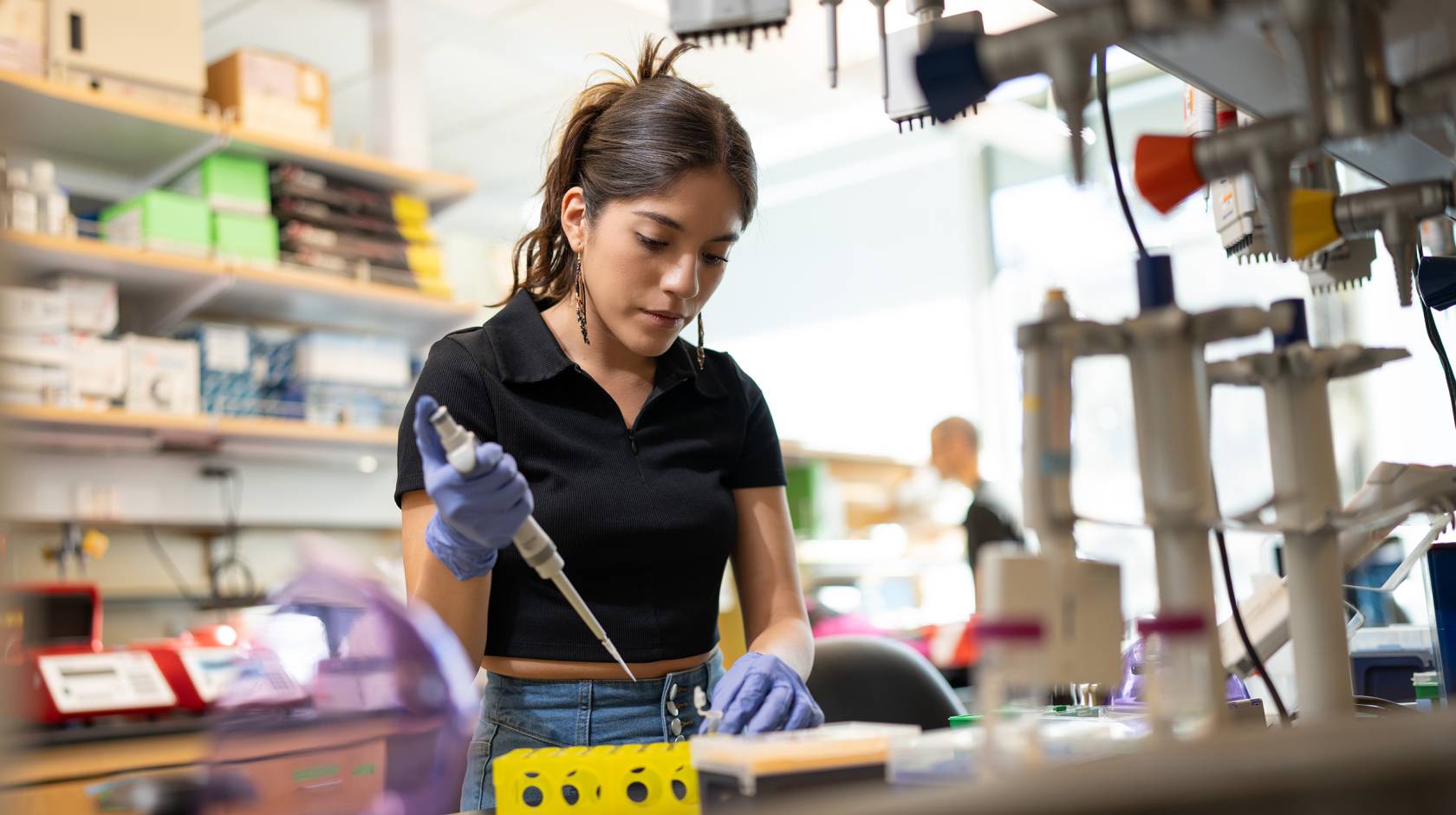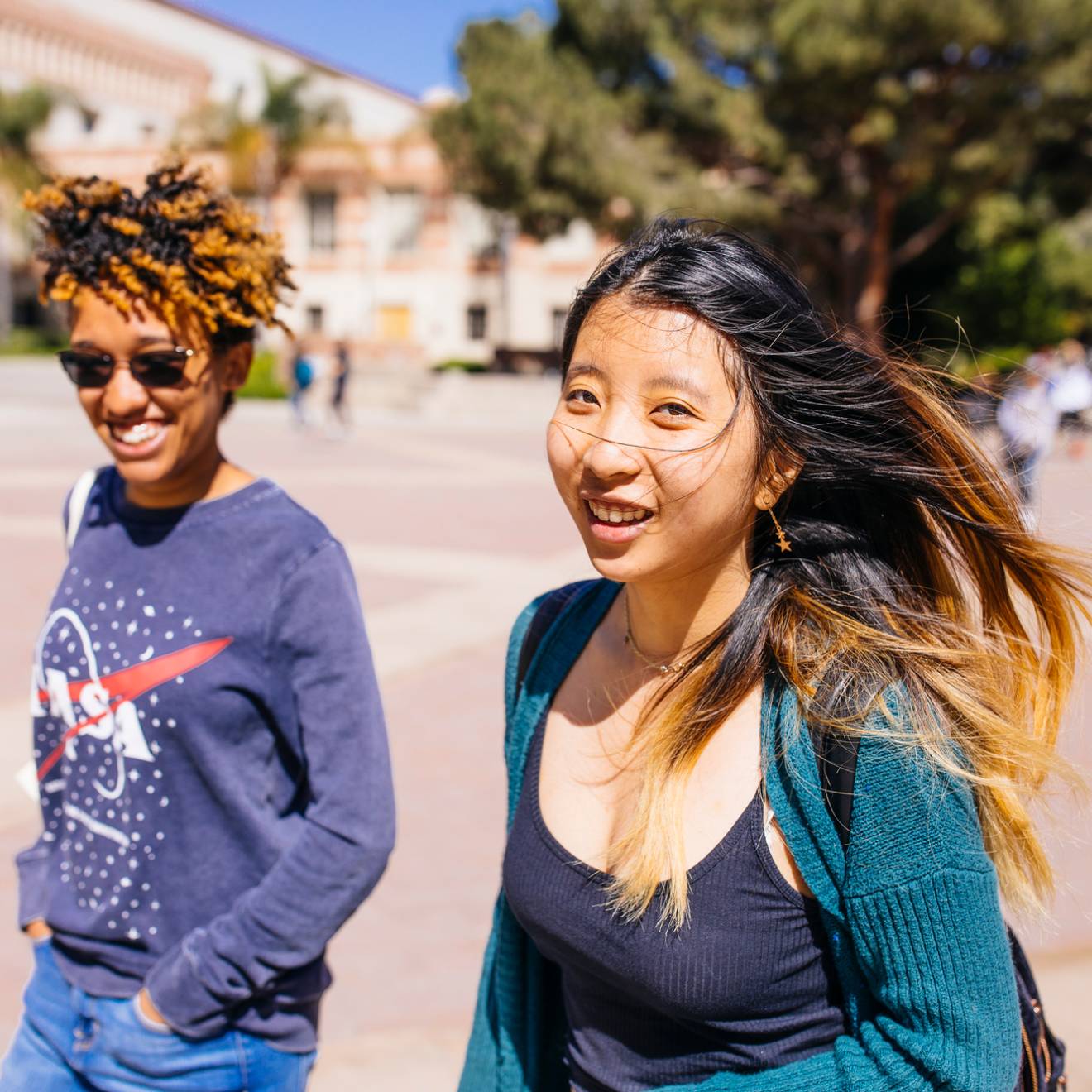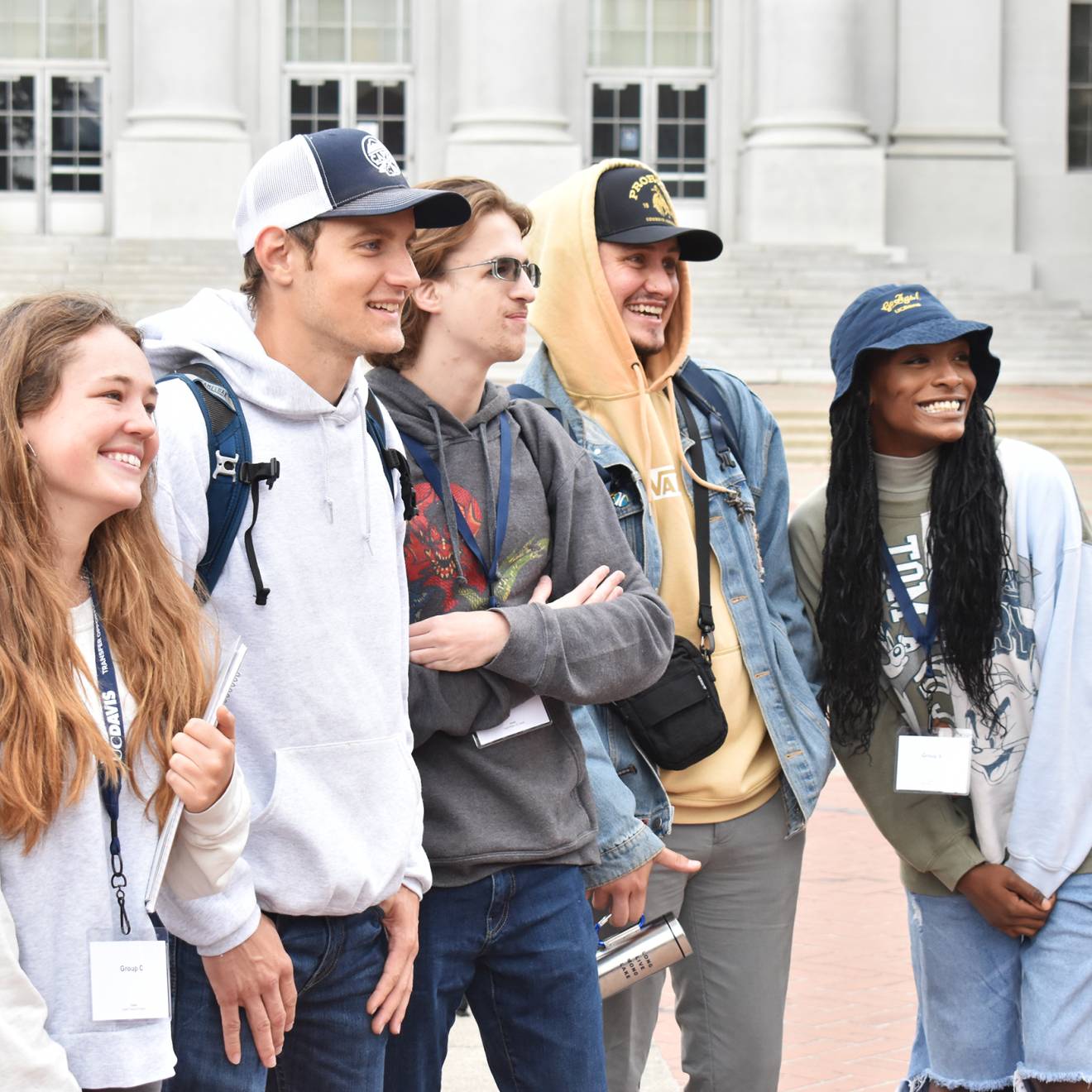Apollonia Morrill, UC Newsroom

With precious little spare time outside her schoolwork, Victoria Morales Vargas was faced with a financial dilemma as she rounded the bend to her junior year at UC San Diego. She could continue volunteering in a prestigious campus research lab or switch to a part-time job that would help pay for her living expenses and reduce the size of her college loans.
On the cusp of giving up her hard-earned research role, Vargas Morales connected with LAEP, a new program aimed at helping students in just her predicament.
Funded by the California Student Aid Commission, LAEP (the Learning-Aligned Employment Program) offers paid, career-building jobs for undergrads with financial need. The program is rolling out with research jobs at all nine undergraduate campuses and will expand to off-campus employment opportunities in future years.
Designed as an alternative to traditional work-study hours, LAEP helps low-income students connect with research jobs that advance their major or career interests. The jobs provide a professional springboard — helping students hone their skills, train with the latest technology, learn from world-renowned faculty and network in their chosen field.
Read on to hear Morales Vargas’ story and meet other undergrads making the most of LAEP.
Oge Okpala spends a good chunk of every week in Dr. Rodrigo Almeida’s plant epidemiology lab at UC Berkeley, deep in the weeds, so to speak, of the grapevine red blotch virus. Farmers in Napa County regularly send shipments of their grapevines to the lab, where Okpala chops them up to extract and test DNA samples.
A persistent problem in California and Oregon vineyards, red blotch virus delays grape ripening and reduces the quality of the fruit. It’s a significant economic blow for growers. Okpala analyzes lab data using bioinformatic software to track infection patterns, with the goal of shedding light on how to prevent or mitigate the disease’s spread.
Okpala’s work is part of a larger project to develop an AI tool capable of scanning an entire vineyard for the virus. But through LAEP, she is also being paid to do her own research on the disease, work she is funneling into her biology thesis to meet the Honors lab requirement. It’s a win-win-win-win situation: Okpala earns needed money to cover her school costs, gets valuable career experience and qualifies for an honors degree, while the lab benefits from a longer-term engagement with a talented undergrad.
At the outset, Okpala volunteered in the lab for the experience, also working a paid part-time job as a work-study tutor. But more recently, LAEP funding for the research position has allowed her to shift the bulk of her hours to the lab while still staying on track to graduate debt-free.
“LAEP eliminated a lot of work on my end, by not having to look for a fellowship or some other sort of funding to help get me paid for the research. It puts me in a nice spot to pursue research after I graduate and helps me build the skills I need to apply to grad school.”
As the 2023 spring quarter approached, Victoria Morales Vargas was faced with a difficult decision: continue her work in the lab of Dr. Matthew Panizzon, an associate professor of psychiatry, as an unpaid volunteer, or opt for a part-time job that would help cover her living expenses and alleviate financial stress.
While she weighed her options, Morales Vargas learned about a brand new program that could bridge the gap by funding her work as a research assistant. With the support and guidance of her mentors in the Panizzon Lab, she applied for LAEP and was accepted.
Since LAEP allows students to work on their own personal project in the lab, Morales Vargas, who is interested in women’s health and cognitive aging, has had the opportunity to study the link between psychological distress during menopause and dementia risk. Through her work, she hopes to shed light on why women have a higher risk of dementia and how their neural integrity can be better protected. This project builds upon the Alzheimer’s research that she had previously assisted with for academic credit prior to her acceptance to LAEP.
“Sometimes it’s a little sad if you have to work due to financial needs rather than gain research experience, so LAEP really helped a lot,” said Morales Vargas, who is a third-year student majoring in psychology and cognitive behavioral neuroscience. “LAEP puts my financial worries at ease while also boosting my career goals and future career path, so it’s really a win-win. I’m grateful for all the resources and all the opportunities the program has given me.”
In addition to continuing her personal research project, Morales Vargas is currently assisting in the lab with data collection for a study related to ovarian hormone suppression. She credits her mentors in the Panizzon Lab with pushing her and motivating her to achieve success.
“The mentors I’ve had around me have been absolutely amazing — life-changing, really,” said Morales Vargas. “What I’d like to take from this, aside from all the experience and skills that I’ve gathered, is that I’d like to mold myself into the person that I want to be for others. Seeing how my mentors in the lab have given me so much of their time and energy makes me want to be that type of person in whatever workplace I end up in.”
As a kid growing up in Los Angeles, science was one of summer’s great delights for Sugey Garcia Galvan. The STEM programs in her schools were thin, but Garcia Galvan’s mom, an immigrant from Guatemala, made sure that summer camps at the California Science Center were always part of the picture.
One of those camps was all about marine biology, and it planted a seed of inspiration. Without strong educational resources around STEM in middle and high school, however, Garcia Galvan figured her dream career as a marine science researcher was out of reach. But with the help of a program at UCLA that helps STEM students from underrepresented backgrounds get a foothold in the field, that all changed.
Through that program, Garcia Galvan got her first opportunity to participate in hands-on scientific research — and in marine biology, no less. She landed a role in the lab of Dr. Paul Barber, an evolutionary and conservation geneticist. His lab uses cutting-edge genomic tools to address ecological questions in marine environments, and Garcia Galvan soon found herself immersed in a project on biodiversity in seagrass beds in the Port of Los Angeles.
In the first year, Garcia Galvan reviewed studies in the field and trained on next-generation environmental genetic sequencing techniques. Her funding was running down when the graduate student overseeing Garcia Galvan’s project unexpectedly left the lab. Barber was able to extend her paid position through LAEP, allowing Garcia Galvan not only to continue the work, but also to expand her responsibilities significantly, carrying out DNA testing, analyzing data and even authoring the research report herself.
“LAEP has allowed me to continue working in the lab without the pressure of finding funding or a job outside of research to pay for school,” says Garcia Galvan. “It’s even giving me the opportunity to publish a paper, which is so surreal and exciting. It’s not something a lot of undergrads get to do.” The experience is also positioning her for graduate school and a career in her chosen field, ecology and conservation.
Aphids, leafhoppers, lacewings and mantids. They’re just a few of the many thousands of insects Toxtli Huitzilopochtli has cataloged in his research on insect biodiversity.
As a sophomore at UC Merced, Huitzilopochtli began volunteering in the lab of Dr. Andrea Joyce, an associate professor in public health and the environmental systems graduate program. Now going on three years, the job has morphed into a paid LAEP position that has helped cover his college costs while providing key career development.
Huitzilopochtli started by collecting insects from pistachio and almond orchards with Joyce’s team, freezing them by the bagful. Over the next year, he sorted the specimens one by one under a microscope, sampling DNA and preparing a blended bug mixture for metabarcoding, a next-generation genomic technology that determines all species present in a sample. The goal is to investigate whether organic pest control methods can be just as effective as conventional ones, while preserving valuable biodiversity, saving money and protecting public health.
While getting up close and personal with creepy crawlies might not be everyone’s cup of tea, for Huitzilopochtli it has been a lifelong pursuit. Growing up in both the U.S. and Mexico, his fascination with bugs started young. After visiting an entomology lab at UC Berkeley in elementary school, he knew he had found his calling. “Ever since that day, it’s been my one goal. Every step I’ve taken has been to get closer to becoming an entomologist.”
Early in his time with the lab, Joyce got a grant that could pay Huitzilopochtli for a year. As that funding was timing out, LAEP was getting off the ground, and Joyce connected the dots. “I thought LAEP would allow him another year in the lab to learn additional research skills,” she recalls.
“Many student research positions run for six or eight weeks in the summer. Those programs are really fun and educational, but experiencing research across an entire academic year exposes a student to different parts of a project and helps them find their career fit,” explains Joyce. “You might discover that you love fieldwork, for instance, but you are less of a lab person. And spending more time with a research group helps this path feel attainable.”
For his part, Huitzilopochtli is making the most of the extra year of paid research. He created and presented a poster at the Entomology Society of America conference and plans to submit a paper for publication in the near future, lining up the purposeful strides that will put his dream job in reach.
Sara Bock provided the profile of Victoria Morales Vargas for this piece.

